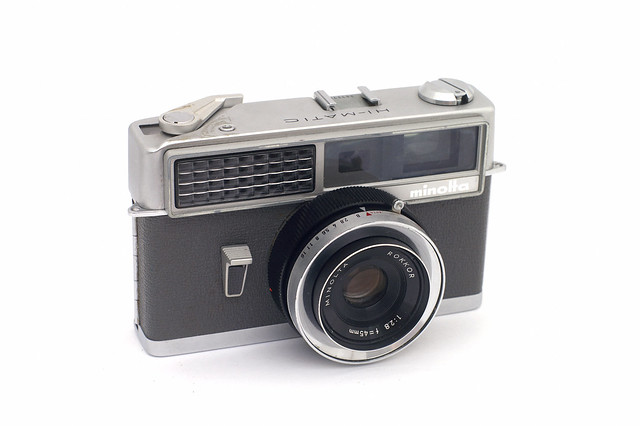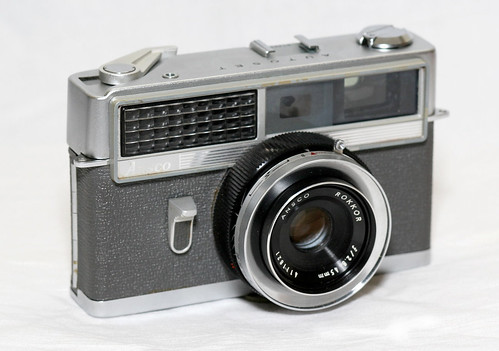Minolta Hi-Matic

|
| Standard-setting 1962 rangefinder image by Steve Harwood (Image rights) |
The Minolta Hi-Matic camera redefined Minolta's series of budget rangefinder cameras, although they overlapped with the less-advanced Uniomat II and Uniomat III. The Hi-Matics always had a fully-automatic exposure mode. The original Hi-Matic model controlled this via a selenium meter, and offered a flash mode with shutter speed 1/30 sec. and manual aperture control. This model became famous in its Ansco OEM version, the Ansco Autoset, as one of the cameras that Astronaut John Glenn used during his space flight[1][2]
Later Hi-Matics had CdS meters (beginning with the Hi-Matic 7), with the meter cell always placed within the filter ring.
Specifications
- Type: rangefinder camera
- Manufacturer: Minolta
- Year of launch: 1962
- Film: 35mm with speeds from 6 to 1600 ASA
- Lens: 1:2.0/45mm (6 elements in 5 groups)
- Shutter: Citizen leaf shutter with meter-controlled aperture/speed combinations from f2 1/45 sec. to f16 1/500sec
- Metering: selenium meter
- Size: 138×84×67 mm
- Weight: 740 g
Later variant
- Lens: 1:2.8/45mm (4 elements)
Links
- ↑ Glenn used a modified Leica for pictorial images: "Another Journey for John Glenn’s Ansco Camera" (May 27, 2011) blog post from Smithsonian National Air & Space Museum
- ↑ The Ansco was modified by NASA with a pistol grip and optics to make UV spectrographs, not pictorial images: "Camera, Spectrographic, 35mm, Glenn, Friendship 7" in the collection of the Smithsonian National Air and Space Museum.

|
| As Ansco Autoset image by edjpgcom (Image rights) |